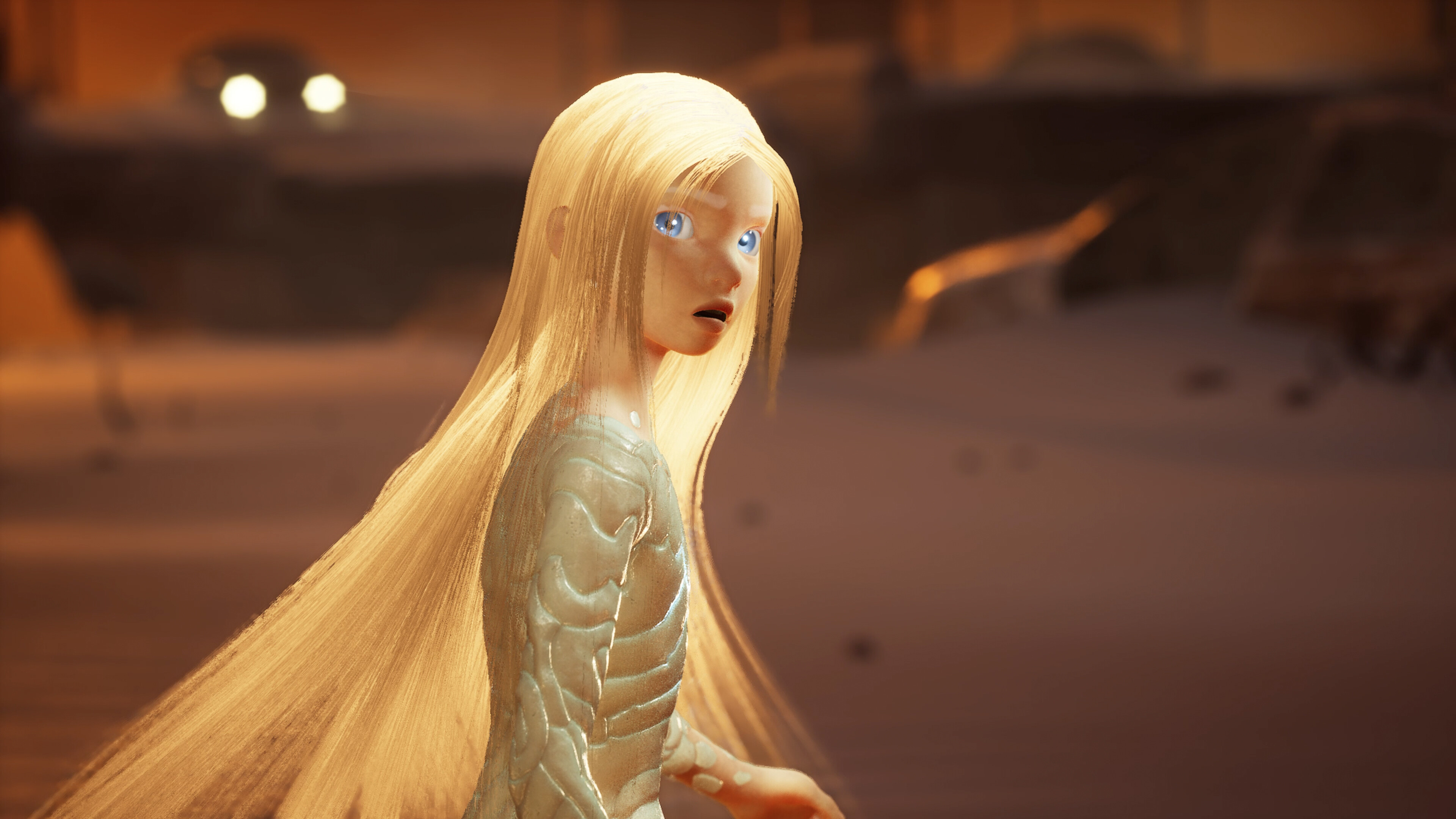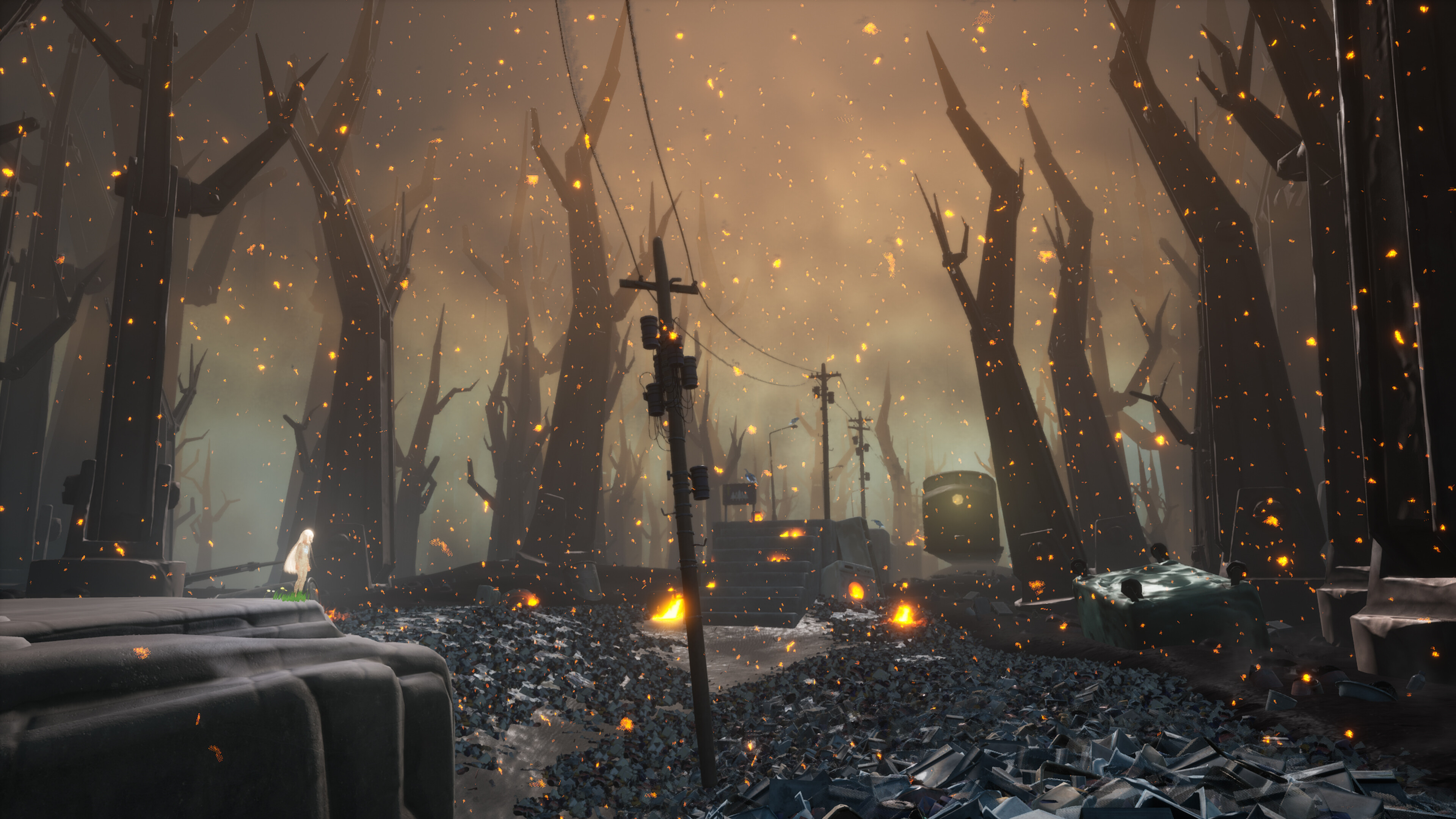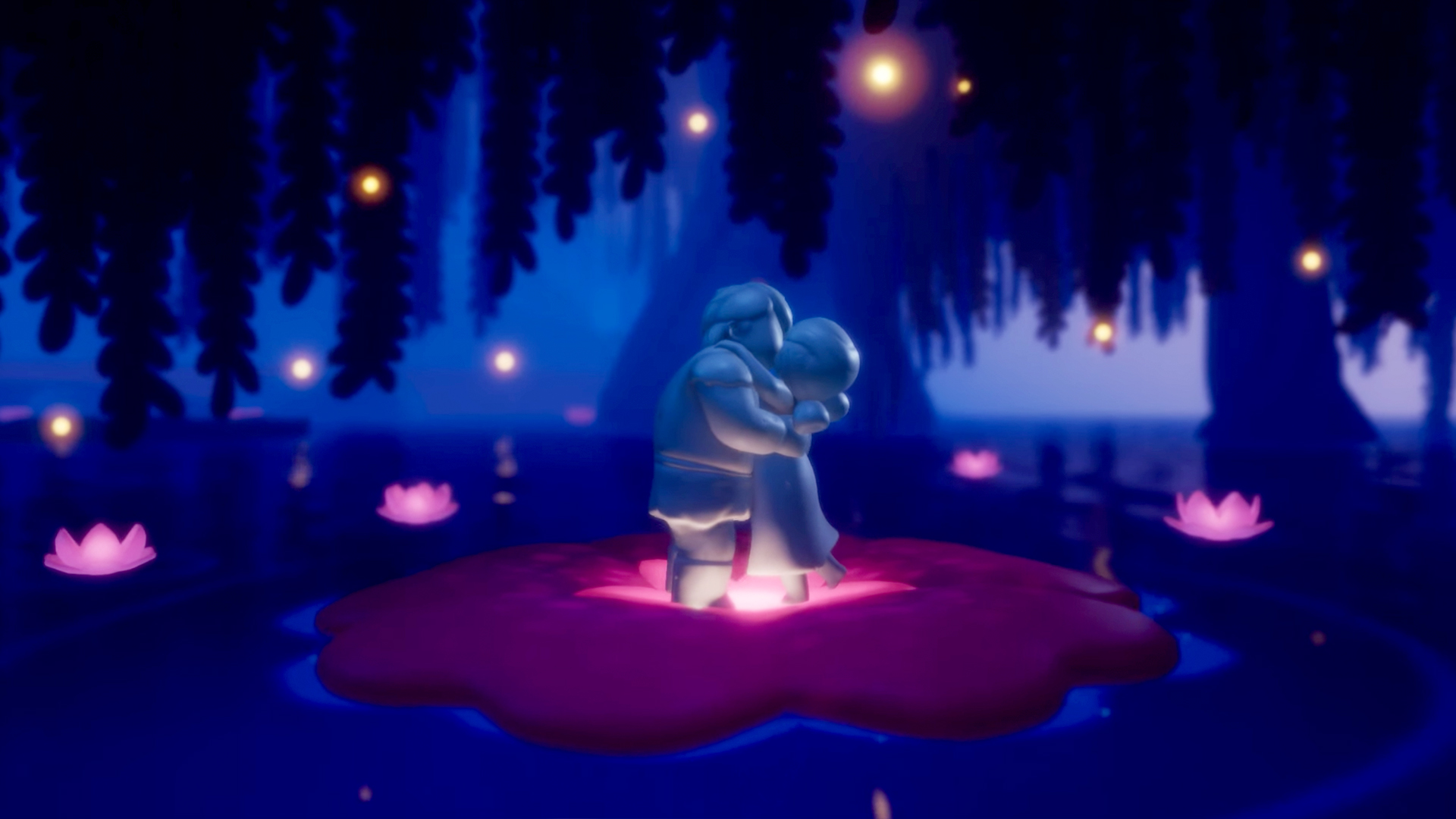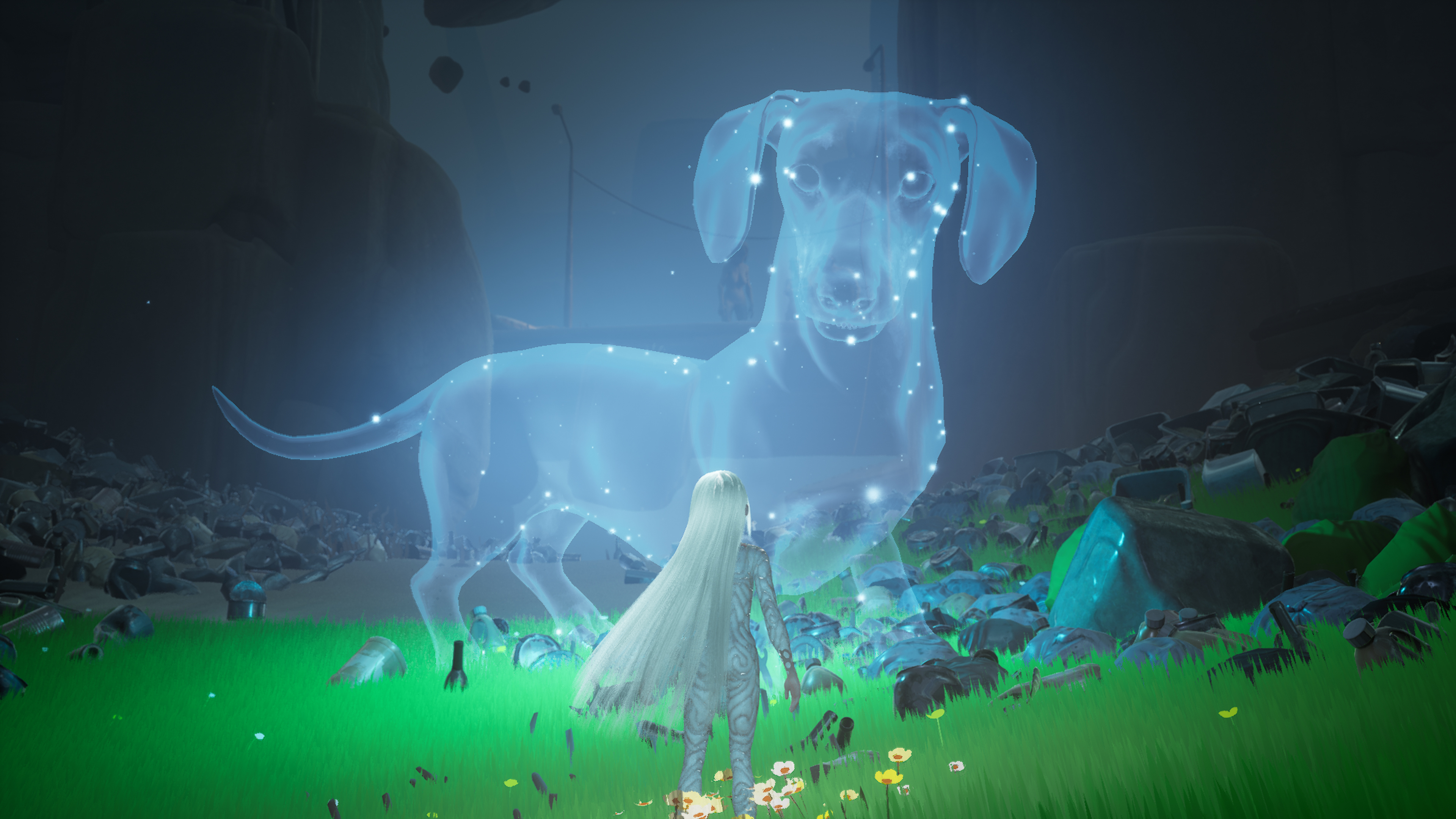You can pet the animals in After Us, but can you save them?
Hands-on impressions of Piccolo’s vast, vivid and powerfully conflicted ecological action game

From a distance, After Us looks like a game about resurrecting a fallen world. That's certainly what I was expecting when I travelled to Barcelona for a hands-on demo this spring. A third-person platforming adventure from Piccolo Studios, the team behind GamesRadar+'s 2019 favourite Arise: A Simple Story, it casts you as Gaia, a ghostly child in the Studio Ghibli tradition with flowing luminous hair, who is searching vivid post-apocalyptic landscapes for the souls of extinct animals.
There are eight major souls, or Vessels, to recover, plus dozens of optional species found a little off the beaten path in each shattered and sprawling, but essentially linear urban environment. They appear as sparks, hovering beneath flyovers or tucked away in alleys full of rusting cars. Scoop them up by lobbing Gaia's glowing heart at them, and the animals in question refill the geography, with herds of deer and packs of dogs appearing in both explored levels and those still to come.
After you


Arise: A Simple Story is a breathtaking trip to the afterlife with a time travelling twist
Refill, that is, but not repopulate - "haunt" is more like it, actually. Rescued creatures can be petted and sung to: they'll call out in response like companion players in thatgamecompany's Journey. But they're represented nonetheless as phantoms, rather than flesh-and-blood animals, often defying the laws of physics: you'll see rays and whales swoop through the game's flaming, polluted skies. They bring charm to your surroundings, but not life. This lends After Us a powerful sense of melancholy, for all the game's core theme of hopefulness. You aren't saving these creatures, only restoring their images to a universe that is too broken to remember them.
If the animals invite empathy and sorrow, the game's humans are a source of dread – to begin with, anyway. They're found everywhere along the route to each level exit: hundreds upon hundreds of naked, stony effigies, frozen in the act of fleeing through the ruins of their own civilisation.
A handful are still animate, juddering into angry motion as you approach. These must be "redeemed" using Gaia's throwable heart, an awkward attempt to make this allegory of ecological calamity work as a conventional combat game, with flashing red attack indicators and timed dodges. The others are strangely helpful, however. In journeying through the world they also inadvertently guide you through it, crowding at key junctions or gazing at the next ledge in a platforming section.
In the process of following them, you might start to sympathise with them. Threatening when seen from behind, each human figure is pitiful from the front, their faces racked by fear and desperation. They form an unspoken community, rather than being interchangeable statues: you'll see parents carrying their kids, and what appear to be leaders, ushering the rest toward symbolic landmarks such as listing fairground carousels. The hostile ones sometimes release their memories when defeated – collectible hand-drawn accounts of daily life in a bygone world, which hint at the events that led to its fall.
Gaia herself sits somewhere between human and nonhuman realms. Her Mother – the game's one speaking role – is a vast, sentient tree at the heart of the hub "Ark" area, a biblical haven reminiscent of Sonic Adventure's old Chao gardens. Her body is wrapped in iridescent bark, and her voice has rejuvenating properties: you can hold a button to charge up a cry that temporarily blankets the ravaged soil with greenery while knocking back attackers.
Sign up to the GamesRadar+ Newsletter
Weekly digests, tales from the communities you love, and more

"The absence of progression or any kind of resource element is one way After Us aims to stand apart from certain other eco-themed action titles".
Beyond that, however, she handles a lot like her bog-standard human peers in other third-person games, specifically Prince of Persia: Sands of Time. Gaia can run up walls, glide to avoid fall damage, and dash or double-jump to cross a chasm. She's easy and enjoyable to control, with no abilities to unlock or stats to improve. Variety in the game comes from new puzzle props, such as jump-extending ocean currents and enormous TVs that serve as teleporters, rather than extra equipment or a progression system.
The absence of progression or any kind of resource element is one way After Us aims to stand apart from certain other eco-themed action titles, which preach the evils of exploitation or conquest only to build their own gameplay around killing and looting. At the same time, it's designed to be recognisable to a mainstream audience, and this dual agenda inevitably generates a bit of friction. The combat especially seems to exist to fulfil commercial expectations, rather than because it has a meaningful place in this world.
Only time will tell if Piccolo can pull off this complicated balancing act. But perhaps the game is better for being a little unresolved, at odds with itself. There have been far more ambitious videogames about ecological apocalypse, such as Molleindustria's Lichenia or Phoebe Shalloway's Even in Arcadia. But After Us is quietly captivating for the mixed feelings it conjures about the instigators and victims of disaster, with animals who are both cute critters and undead museum pieces, and humans who are monsters, but not quite foes.
Here are some of the best upcoming indie games that should top your wishlist


